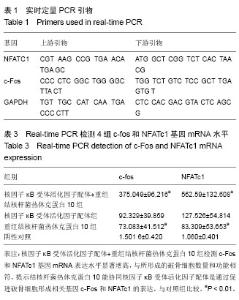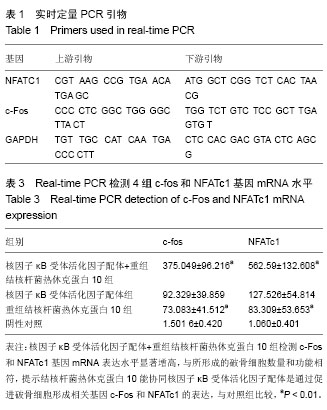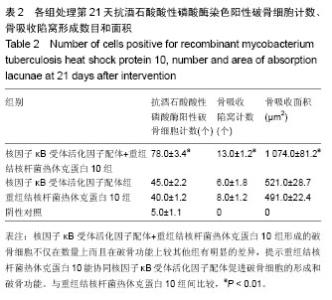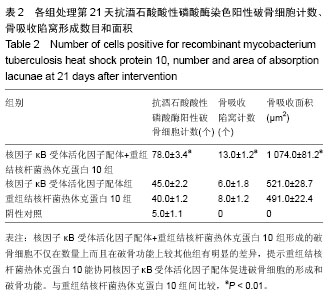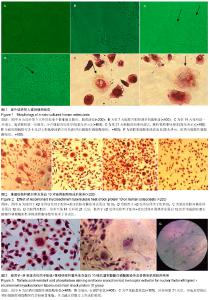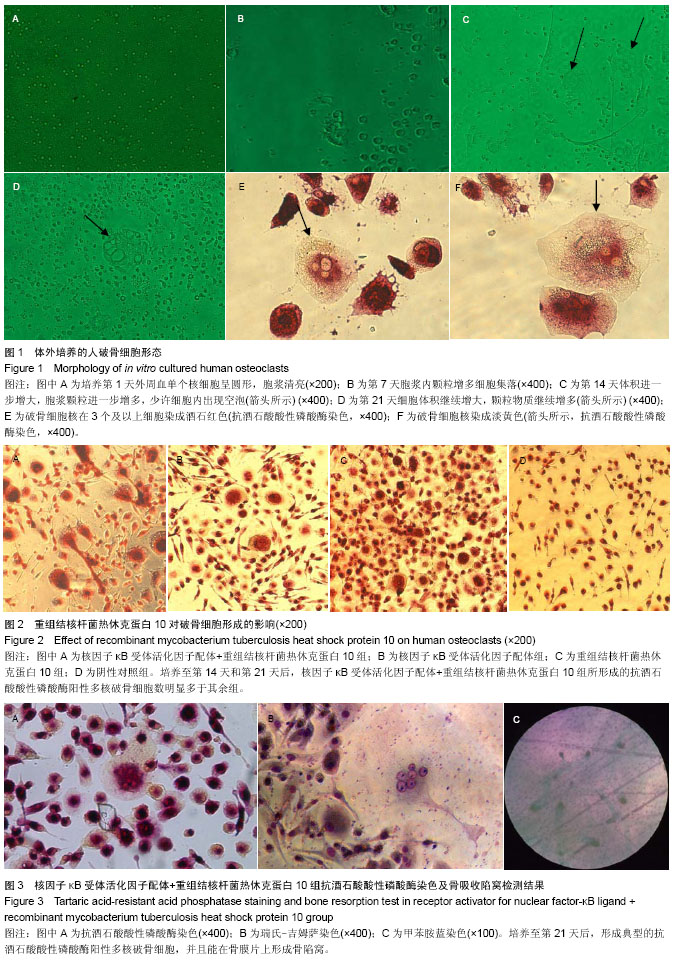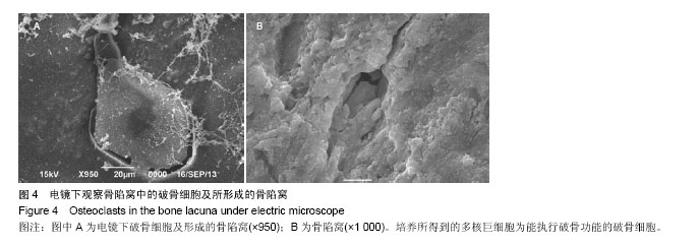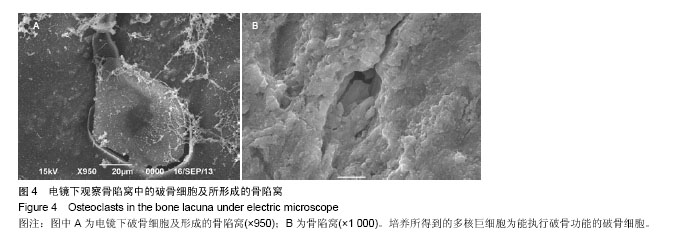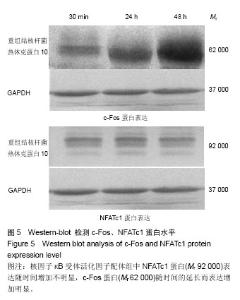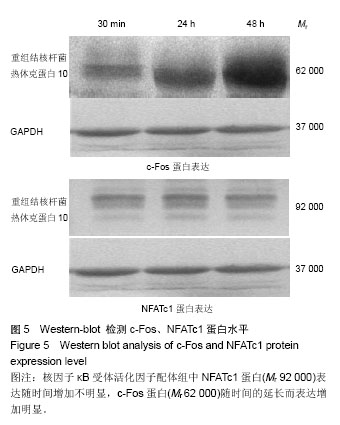| [1] Akiyama T, Shinzawa M, Akiyama N.TNF receptor family signaling in the development and functions of medullary thymic epithelial cells. Front immunol.2012;3 :278-287.
[2] Xing L, Xiu Y, Boyce BF. Osteoclast fusion and regulation by RANKL-dependent and independent factors.World J Orthop. 2012;3(12):212-222..
[3] Fan M, Rao T, Zacco E, et al. The unusual Mycobacterium chaperonins : evidence for in vivo oligomerization and specialization of function. Molecular Microbiology, 2012; 85(5):934-944..
[4] Hoshino A, Hanada S, Yamada H, et al.Mycobacterium tuberculosis escapes from the phagosomes of infected human osteoclasts reprograms osteoclast development via dysregulation of cytokines and chemokines. Pathogens and disease. 2013;186:1241-1246.
[5] Kotake S, Yago T, Kawamoto M, et al. Human receptor activator of NF-kB ligand(RANKL) induces osteoclastogenesis of primates in vitro.In Vitro Cellular and Developmental Biology-Animal.2012;48:593-598.
[6] 仲蕾蕾,杨冰,黄晓斌,等.0PG/ RANKIJ/RANK系统在成骨细胞和破骨细胞相互调节中的作用[J].中国骨质疏松杂志, 2011, 17(11):1010-1013.
[7] Boyce BF, Xing L. Biology of RANK, RANKL, and osteoprotegerin. Arthritis Res Ther. 2007;9 Suppl 1:S1.
[8] Dougall WC.Molecular pathway: Osteoclast-Dependent and Osteoclast-independent Roles of the RANKL/RANK /OPG Pathway in Tumorigenesis and Metastasis .Clin .Cancer Res. 2012;18(2):326-335.
[9] Raju R, Balakrishnan L, Nanjappa V,et al. A comprehensive manually curated reaction map of RANKL/RANK -signalling pathway.Cell Communication and Signalling.2012; 6: 169-173.
[10] Hess E, Duheron V, Decossas M,et al.RANKL induces organized Lymph Node Growth by Stromal Cell proliferation.J Immunol.2012;188:1245-1254.
[11] Remen KM, Henning P, Lerner UH, et al.Activation of Liver X Receptor(LXR) inhibits receptor activator Nuclear factor kB Ligand(RANKL)-induced Osteoclast Differentiation in an LxRb-dependent Mechanism.J Biol Chem. 2012;286: 33084-33094.
[12] Kaichi K,Natsuko k,Tomoko H,et al.Changes of serum soluble receptor activator for nuclear factor-kB Ligand after Glucocorticoid Therapy Reflect regulation of its expression by Osteoblasts.J Clin Endocrinol Metab.2012;97:E1909-E1917.
[13] Kyoung W,Hae K,Bo M,et al.Stromal cell-derived factor(SDF)-1 induces RANKL in Rheumatoid Arthritis synovial fibroblasts and CD4+ T cells.Faseb J.2012;26: 655-665.
[14] Jabbar S, Drury J, Fordham JN,et al. Osteoprotegerin,RANKL and bone turnover in postmenopausal osteoprosis.J Clin Pathol. 2011;64:354-357.
[15] Xu S, Wang Y, Lu J, et al.Osteoprotegerin and RANKL in the pathogenesis of rheumatoid arthritis-induced osteoprosis. Rheumatology international.2012;32(11):3397-3403.
[16] Nakamura I, Takahashi N, Jimi E, et al.Regulation of osteoclast function.Mordern Rheumatology.2012;22:167-177.
[17] Zhao Q, Wang X, Liu Y, et al. NFATc1: Functions in osteoclasts. Biochemistry and Cell Biology.2010; 42:576-579.
[18] Bynum H. Riding the waves:optimism and realism in the treatment of TB. Lancet. 2012; 380:1465-1466.
[19] Henderson B, Lund PA, Coates AR. et al.Multiple moonlighting functions of mycobacterial molecular chaperons. Elesvier Tuberculosis.2010; 90:119-124.
[20] Merino P, Candel FJ, Gestoso I,et al.Microbiological diagnosis of spinal tuberculosis.International Orthopaedics.2012; 36: 233-238.
[21] Castanié-Cornet MP, Bruel N, Genevaux P.Chaperone networking facilitates protein targeting to the bacterial cytoplasmic membrane. Molecular Cell Research, 2013; 81: 87-91.
[22] Raju RM, Goldberg AL, Rubin EJ,et al. Bacterial proteolytic complexes as therapeutic targets. Nature reviews drug discovery.2012;11:777-789.
[23] Dougall WC.Molecular pathway: Osteoclast-Dependent and Osteoclast-independent Roles of the RANKL/RANK /OPG Pathway in Tumorigenesis and Metastasis.Clin.Cancer Res. 2012; 18(2):326-335.
[24] Zhao B, Grimes SN, Li S, et al.TNF-induced osteochastogenesis and inflammatory bone resorption are inhibited by transcription factor RBP-J. JEM. 2012;209: 319-334.
[25] Harre U, Schett G. The ups and downs of bone in health and rheumatic disease . Rheumatol.2013; 9: 67-68.
[26] Charles JF, Coury F, Sulyanto R, et al. The collection of NFATc1-dependent transcripts in the osteoclast includes nuerous genes non-essential to physiologic bone resorption. Bone.2012; 51: 902-912.
[27] Yarilina A, Xu K, Chen J, et al. TNF activates calcium-nuclear factor of activated T cells (NFAT)c1 signaling pathways in human macrophages. PNAS.2011; 108: 1573-1578.
[28] 余世明.破骨细胞在肿瘤低氧微环境中活性的研究进展[J].重庆医学,2011;40(26):2687-2690.
[29] 王生瑜,袁小平.甲状旁腺素对大鼠正畸牙根吸收后修复期破骨细胞的影响[J].重庆医学,2013,42(30):3644-3646.
[30] 宁旭,杨德猛,王长庚,等. TNF-a对骨结核破骨细胞诱导机制的研究[J].山东医药,2013;53(25):4-9. |
